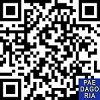THE IMPLEMENTATION OF VOCABULARY TEACHING TECHNIQUES FOR EFL STUDENTS AT ISLAMIC SCHOOL THAILAND
Abstract
Abstrak: Mengembangkan kosakata juga memungkinkan pelajar untuk memahami konsep dan ide yang kompleks. Teknik pengajaran kosakata bermanfaat untuk belajar bahasa Inggris karena merupakan salah satu proses kunci dalam penguasaan empat keterampilan. Penelitian ini bertujuan untuk membahas terkait (1) teknik kelas yang digunakan guru dalam mengajar kosakata dan tujuan penggunaan teknik tersebut, (2) peran guru dalam menerapkan teknik tersebut, (3) unsur kosa kata yang ditingkatkan dalam penerapan teknik tersebut. Penelitian ini menggunakan metodologi penelitian deskriptif kualitatif dengan desain studi kasus, dengan pengumpulan data dilakukan melalui wawancara dan observasi terhadap guru bahasa Inggris di Padhung Islamic School, Thailand. Analisis kualitatif digunakan untuk menganalisis data yang dikumpulkan dari responden. Hasil penelitian ini menjelaskan bahwa guru menggunakan beberapa teknik untuk mendorong penguasaan kosa kata siswa, termasuk pemahaman yang sesuai konteks, penggunaan alat bantu visual, dan penggabungan kegiatan interaktif seperti permainan. Teknik-teknik ini terbukti efektif dalam memfasilitasi pemahaman pelajar dan retensi kosakata bahasa Inggris. Temuan penelitian saat ini juga menunjukkan bahwa peran guru telah merubah dalam rangka mengembangkan kemandirian peserta didik dalam belajar. Mereka sering kali beralih ke penjelasan yang memungkinkan adaptasi strategi yang berbeda. Studi ini juga menemukan bahwa visualisasi menawarkan keuntungan dalam pengajaran dan pembelajaran kosakata bahasa Inggris, khususnya bagi pelajar EFL Thailand. Visualisasi membantu siswa memahami kata-kata sulit dengan mudah dengan melihat gambar. Implikasinya adalah bahwa menggabungkan berbagai teknik pengajaran dan mengadopsi metode berbasis visual dapat sangat memudahkan proses pembelajaran.
Abstract: Developing vocabulary also enables learners to grasp complex concepts and ideas. Vocabulary teaching techniques are beneficial for learning English because it is one of the key processes in mastering the four skills. This research aims to discuss about (1) the classroom techniques used by the teacher in teaching vocabulary and the purposes of using the techniques, (2) the teacher’s role in implementing the techniques, (3) the elements of vocabulary improved in implementing the techniques. The study adopted a descriptive qualitative research methodology with study case design, with data collection conducted through interviews and observations of English teachers at Padhung Islamic School, Thailand. Qualitative analysis was used to analyze the data collected from the respondents. The study's findings revealed that the teachers employed several techniques to encourage learners' mastery of vocabulary, including contextualization, the use of visual aids, and the incorporation of interactive activities such as games. These techniques were found to be effective in facilitating learners' comprehension and retention of English vocabulary. The current study's findings also indicate that teachers’ roles have changed in order to develop learners’ independence in learning. They will frequently turn to explanation which allows for the adaptation of different strategies. The study also found that visualization offers advantages in teaching and learning English vocabularies, especially for Thai EFL learners. Visualization helps the students to understand the difficult words easily by looking at the pictures. The implication is that combining various teaching techniques and adopting a visual-based method can facilitate the learning process to a great extent.
Keywords
Full Text:
PDFReferences
Abdul-Majeed, M. R., & Adnan, D. Q. (2020). Investigating EFL College Students’ Difficulties in Vocabularies. Proceedings of the First Virtual Scientific Conference of the English Language Department in the College of Basic Education - Al-Mustansiriyah University in Cooperation with the University Alturath College, the Lebanese University and the Turkish Universi, September, 975–993.
Adakhiel, T. (2021). Teaching Vocabulary Using the Semantic Feature Technique in Saudi EFL Virtual Classrooms; Students’ Attitudes and Challenges. International Journal of Language and Linguistics, 9(6), 304. https://doi.org/10.11648/j.ijll.20210906.15
Adara, R. A., Zulaeha, E. R., Arianto, A., Kamilah, W., & Najmudin, O. (2023). Analyzing the Correlation Between Students’ Motivation and Error Pronunciation of Voiceless Θ Words: A Qualitative Study. Eralingua: Jurnal Pendidikan Bahasa Asing Dan Sastra, 7(2), 377. https://doi.org/10.26858/eralingua.v7i2.46793
Afzal, N. (2019). A Study on Vocabulary-Learning Problems Encountered by BA English Majors at the University Level of Education. Arab World English Journal, 10(3), 81–98. https://doi.org/10.24093/awej/vol10no3.6
Akbarjono, A., Belawati, E., & Afriani, Z. L. (2022). Students’ Enthusiasm in Learning in the Covid-19 Outbreak. Journal of Research on Language Education, 3(1), 15. https://doi.org/10.33365/jorle.v3i1.1773
Alhajaji, B. H., Algmadi, J. S., & Metwally, A. A. (2020). Exploring the success of GMT technique: Games, mind-mapping, and twitter hashtags in teaching vocabulary in EFL higher education environment. International Journal of Higher Education, 9(3), 290–299. https://doi.org/10.5430/ijhe.v9n3p290
Ali Mansoor, A. A., Mohammed, O. S. M., Ahmed, H. R., Munasser Awadh, A. N., Abdulfatah, H. M., & Sheikh, E. Y. (2023). English language teaching through a short story: A technique for improving students’ vocabulary retrieving. Cogent Education, 10(1), 1–11. https://doi.org/10.1080/2331186X.2022.2161221
Allen, V. F. (1983). Techniques in Teaching Vocabulary. Oxford University Press.
Alqahtani, M. (2015). The importance of vocabulary in language learning and how to be taught. International Journal of Teaching and Education, III(3), 21–34. https://doi.org/10.20472/te.2015.3.3.002
Awaluddin, A. (2013). Techniques in Presenting Vocabulary to Young EFL Learners. Journal of English and Education, 1(1), 11–20.
Baginda, M. (2018). Nilai-Nilai Pendidikan Berbasis Karakter pada Pendidikan Dasar dan Menengah. Jurnal Ilmiah Iqra’, 10(2), 1–12. https://doi.org/10.30984/jii.v10i2.593
Baiq Sumarni, Dharma Dev Bhatta, & Kho, S. F.-C. (2022). The Use of Total Physical Response in Teaching Vocabulary Integrated with Meaningful Classroom Interaction. Journal of Language and Literature Studies, 2(1), 23–32. https://doi.org/10.36312/jolls.v2i1.710
Bao, L. (2023). Special Vocabulary Learning Difficulties for EFL Students with Chinese Backgrounds. Pacific International Journal, 6(2), 108–116. https://doi.org/10.55014/pij.v6i2.360
Bavi, F. (2018). The effect of using fun activities on learning vocabulary at the elementary level. Journal of Language Teaching and Research, 9(3), 629–639. https://doi.org/10.17507/jltr.0903.24
Betal, A. K., & Banerjee, J. (1996). Factors Affecting Setswana-Speaking Children’s Acquisition of English as a Second Language. Tydskrif Vir Taalonderrig/Journal for Language Teaching, 30(2), 111–123.
Bhatti, M. S., Iqbal, A., Rafique, Z., Noreen, S., & Tabassum, F. (2022). Short stories as an innovative EFL teaching technique to improve Pakistani elementary students’ English vocabulary. Journal on English as a Foreign Language, 12(2), 405–420. https://doi.org/10.23971/jefl.v12i2.4060
Brown, H. D. (2004). Language Assessment Principle and Classroom Practices. San Francisco State University.
Cornu, A. M. (1979). The First Step in Vocabulary Teaching. The Modern Language Journal, 63(5–6), 262–272. https://doi.org/10.1111/j.1540-4781.1979.tb02456.x
Creswell, J. W. (2012). Educational Research: Planning, Conducting, and Evaluating Quantitative and Qualitative Research. Pearson Education Inc.
Creswell, J. W., & Guetterman, T. C. (2018). Educational research: Planning, conducting, and evaluating quantitative and qualitative research (6th ed.). Pearson Education, Inc.
Damiri, A., Hastomo, T., & Sari, Y. A. (2022). Visualization Strategy: An Effective Strategy to Teach Reading to Middle School Students. Seltics, 5(1), 1–8.
Darling-Hammond, L., Flook, L., Cook-Harvey, C., Barron, B., & Osher, D. (2020). Implications for educational practice of the science of learning and development. Applied Developmental Science, 24(2), 97–140. https://doi.org/10.1080/10888691.2018.1537791
Destika, V. (2022). Effectiveness of Match Technique to Improve Students’ Vocabulary Mastery based on Gender. Journal Corner of Education, Linguistics, and Literature, 1(3), 168–175. https://doi.org/10.54012/jcell.v1i3.33
Feng, R., Alsager, H. N., Azizi, Z., & Sarabani, L. (2023). Impact of mind-mapping technique on EFL learners’ vocabulary recall and retention, learning motivation, and willingness to communicate. Heliyon, 9(6), e16560. https://doi.org/10.1016/j.heliyon.2023.e16560
Fu, N., Li, G., Sun, Y., & Zhao, Z. (2022). A Study on Motivational Strategies of Adult Second Language Acquisition from the Perspective of TESOL Teaching. Proceedings of the 2022 3rd International Conference on Mental Health, Education and Human Development (MHEHD 2022), 670(Mhehd), 246–253. https://doi.org/10.2991/assehr.k.220704.045
Furidha, B. W. (2022). Teaching Technique in Improving Students ’ Vocabularies through Songs : A Literature Review. 1.
Gairns, R., & Redman, S. (1986). Working with Words: A Guide to Teaching and Learning Vocabulary. Cambridge University Press.
Getie, A. S. (2020). Factors affecting the attitudes of students towards learning English as a foreign language. Cogent Education, 7(1), 1–37. https://doi.org/10.1080/2331186X.2020.1738184
Ghaedi, R., & Shahrokhi, M. (2016). The impact of visualization and verbalization techniques on vocabulary learning of Iranian high school EFL learners: A gender perspective. Ampersand, 3, 32–42. https://doi.org/10.1016/j.amper.2016.03.001
Haleem, A., Javaid, M., Qadri, M. A., & Suman, R. (2022). Understanding the role of digital technologies in education: A review. Sustainable Operations and Computers, 3(February), 275–285. https://doi.org/10.1016/j.susoc.2022.05.004
HASHEMİ, A. (2021). The effects of using games on teaching vocabulary in reading comprehension: a case of gifted students. Journal for the Education of Gifted Young Scientists, 9(2), 151–160. https://doi.org/10.17478/jegys.846480
Humaira, H., Bafadal, F., & Isnaini, I. (2023). Teaching English Based-Realia for Young Learners in MBS (Muhammadiyah Boarding School) Mataram NTB. Linguistics and ELT Journal, 11(1), 10. https://doi.org/10.31764/leltj.v11i1.14487
Hung, T. N., Thi, N., & Lan, B. (2023). The Use of Mind-Mapping Technique t owards Students ’ English Vocabulary Retention at a Primary School. International Journal of Social Science And Human Research, 06(05), 3009–3014. https://doi.org/10.47191/ijsshr/v6-i5-64
Istifadah, H. (2019). Teaching Vocabulary Techniques Through Letterland in Star Kiddy Preschool Semarang. KnE Social Sciences, 3(15), 36. https://doi.org/10.18502/kss.v3i15.4352
Junaid, M., Syam, U. K., & Hambali, U. (2023). The Implementation of Vocabulary Learning Strategies In Students Vocabulary Size. English Language Teaching Methodology, 3(1), 38–51. https://doi.org/10.56983/eltm.v3i1.193
Kayaaltı, M. (2018). Mnemonic Technique - An Effective Vocabulary Teaching Method to Plurilingual Students. Modern Journal of Language Teaching Methods (MJLTM), 8(5), 388–400.
Kędra, J. (2018). What does it mean to be visually literate? Examination of visual literacy definitions in a context of higher education. Journal of Visual Literacy, 37(2), 67–84. https://doi.org/10.1080/1051144X.2018.1492234
Kim, D. (2020). Learning Language, Learning Culture: Teaching Language to the Whole Student. ECNU Review of Education, 3(3), 519–541. https://doi.org/10.1177/2096531120936693
Kim, J., Lee, H., & Cho, Y. H. (2022). Learning design to support student-AI collaboration: perspectives of leading teachers for AI in education. Education and Information Technologies, 27(5), 6069–6104. https://doi.org/10.1007/s10639-021-10831-6
Kim, S., Raza, M., & Seidman, E. (2019). Improving 21st-century teaching skills: The key to effective 21st-century learners. Research in Comparative and International Education, 14(1), 99–117. https://doi.org/10.1177/1745499919829214
Kizi, Y. U. B., Bozorova, M. S., Mansurova, N. A., Kizi, A. Z. A., & Qizi, S. A. S. (2020). Language teaching methods: Theory and practice. Journal of Critical Reviews, 7(5), 768–775. https://doi.org/10.31838/jcr.07.05.157
Komachali, M. E., & Khodareza, M. (2012). The effect of using vocabulary flash card on Iranian pre-university students’ vocabulary knowledge. International Education Studies, 5(3), 134–147. https://doi.org/10.5539/ies.v5n3p134
Li, Z., & Qiu, Z. (2018). How does family background affect children’s educational achievement? Evidence from Contemporary China. Journal of Chinese Sociology, 5(1), 1–21. https://doi.org/10.1186/s40711-018-0083-8
London, R. F. (2022). Using Differentiated Learning Activities to Improve Student’s Grammatical Competence. East Asian Journal of Multidisciplinary Research, 1(6), 1017–1032. https://doi.org/10.55927/eajmr.v1i6.696
Madrid, D., Ortega, J. L., Jiménez, S., Pérez, M. C., Annette Gomis, J., Segura, F., Pérez, M. B., García, M. M., Hidalgo, E., José, M., Verdejo, & Robinson, B. (1993). Sources Of Motivation In The Efl Classroom. VIII Jornadas Pedagógicas Para La Enseñanza Del Inglés, 1(2), 492–500.
Matthew B Miles, & Huberman, A. M. (1994). Qualitative Data Analysis: An Expanded Sourcebook (2nd ed.). Sage Publications.
Meliana, N., Umaemah, A., & Hidayat, H. (2018). Exploring Teacher ’ S Strategies in Teaching. The Journal of English Language Teaching in Foreign Language Context, 3(1), 34–46.
Mestres-Missé, A., Münte, T. F., & Rodriguez-Fornells, A. (2014). Mapping concrete and abstract meanings to new words using verbal contexts. Second Language Research, 30(2), 191–223. https://doi.org/10.1177/0267658313512668
Miles, M. B., Huberman, A. M., & Saldana, J. (2014). Qualitative Data Analysis: A Methods Sourcebook (3rd ed.). Sage Publications.
Minda, S., & Perdana, P. R. (2023). Learning Styles and Vocabulary Achievement. Lingua, 19(1), 101–111. https://doi.org/10.34005/lingua.v19i1.2773
Munna, A. S., & Kalam, M. A. (2021). Teaching and learning process to enhance teaching effectiveness: literature review. International Journal of Humanities and Innovation (IJHI), 4(1), 1–4. https://doi.org/10.33750/ijhi.v4i1.102
Nikmah, R. D., & Husein, R. (2018). The Effectiveness of Make a Match Technique in Teaching Vocabulary. Proceedings of the 3rd Annual International Seminar on Transformative Education and Educational Leadership, 200(Aisteel), 596–600. https://doi.org/10.2991/aisteel-18.2018.130
Nurmala, M. (2020). How Gesture Provides a Helping Hand and Supports Children’S Language Acquisition. Ana’ Bulava: Jurnal Pendidikan Anak, 1(2), 63–74. https://doi.org/10.24239/abulava.vol1.iss2.13
Ordu, U. B.-A. (2021). The Role of Teaching and Learning Aids/Methods in a Changing World. Bulgarian Comparative Education Society (BCES), 19, 210–216.
Pateşan, M., Balagiu, A., & Alibec, C. (2018). Visual Aids in Language Education. International Conference Knowledge-Based Organization, 24(2), 356–361. https://doi.org/10.1515/kbo-2018-0115
Pawlak, M. (2021). Investigating language learning strategies: Prospects, pitfalls and challenges. Language Teaching Research, 25(5), 817–835. https://doi.org/10.1177/1362168819876156
Phung, H. (2021). A Study on the Techniques of Presenting Vocabulary to Increase Students’ Motivation. Journal of English Language Teaching and Applied Linguistics, 3(5), 45–54. https://doi.org/10.32996/jeltal.2021.3.5.5
Pinter, A. (2006). Teaching Young Language Learners, Second Edition. Oxford University Press.
Pradana, M., & Syarifuddin, S. (2021). The Struggle Is Real: Constraints of Online Education in Indonesia During the COVID-19 Pandemic. Frontiers in Education, 6(September), 2020–2021. https://doi.org/10.3389/feduc.2021.753776
Puspitarini, Y. D., & Hanif, M. (2019). Using Learning Media to Increase Learning Motivation in Elementary School. Anatolian Journal of Education, 4(2), 53–60. https://doi.org/10.29333/aje.2019.426a
Ramadhan, A., & Adawiyah, S. L. R. (2020). the Effect of Word Webbing Technique on the Students’ Vocabulary Mastery. Vision, 16(2), 59–67. https://doi.org/10.30829/vis.v16i2.812
Risdiany, H. (2021). Pengembangan Profesionalisme Guru Dalam Mewujudkan Kualitas Pendidikan Di Indonesia. Edukatif : Jurnal Ilmu Pendidikan, 3(3), 817–822. https://doi.org/10.31004/edukatif.v3i3.434
Rohmah, H., & Lilawati, E. (2019). Collaboration of Clustering Technique and Picture in Teaching Vocabulary. Eduvelop, 3(1), 21–26. https://doi.org/10.31605/eduvelop.v3i1.394
Sadeghi, K., & Farzizadeh, B. (2013). The Effect of Visually-Supported Vocabulary Instruction on Beginner EFL Learners ’ Vocabulary Gain 1. Mextesol Journal, 37(1), 1–12.
Saengpakdeejit, R. (2014). Strategies for Dealing with Vocabulary Learning Problems by Thai University Students. Silpakorn University Journal of Social Sciences, 14(1), 147–167.
Saleh, A. M., & Ahmed Althaqafi, A. S. (2022). The Effect of Using Educational Games as a Tool in Teaching English Vocabulary to Arab Young Children: A Quasi-Experimental Study in a Kindergarten School in Saudi Arabia. SAGE Open, 12(1). https://doi.org/10.1177/21582440221079806
Sembiring, D. L. B., & Simajuntak, D. C. (2023). Digital Storytelling as an Alternative Teaching Technique to Develop Vocabulary Knowledge of EFL Learners. Journal of Languages and Language Teaching, 11(2), 211. https://doi.org/10.33394/jollt.v11i2.7523
Shahnaei, H. (2021). The Effect of Drawing Pictures on Improving Iranian Elementary EFL learners ’ L2 Vocabulary Knowledge. Journal of Applied Linguistics and Language Research, 8(2), 82–88.
Sjamsir, H., Anggriayani, D., & Mutia Ishaq, P. (2018). The Techniques Teaching Vocabulary with BCCT Based Learning in Islamic Kindergarten Samarinda (A Case Study at Al-Azhar Syifa Budi Kindergarten). 1st International Conference on Early Childhood and Primary Education (ECPE 2018), 244(Ecpe), 65–73. https://doi.org/10.2991/ecpe-18.2018.15
Sotlikova, R. (2023). The Presentation-Practice Route to Teach Vocabulary to Young Learners: A Casa Study at International Schools in Uzbekistan. Journal of Language and Literature Studies, 3(1), 67–79. https://doi.org/10.36312/jolls.v3i1.1172
Sowell, J. (2018). Talking about Words: A Vocabulary Description Game. English Teaching Forum, 45–52.
Spinelli, E., & Siskin, H. J. (1992). Selecting, Presenting and Practicing Vocabulary in a Culturally‐Authentic Context. Foreign Language Annals, 25(4), 305–315. https://doi.org/10.1111/j.1944-9720.1992.tb00549.x
Suardi, S., & Sakti, J. E. (2019). Teacher Difficulties in Teaching Vocabulary. IDEAS: Journal on English Language Teaching and Learning, Linguistics and Literature, 7(2), 92–104. https://doi.org/10.24256/ideas.v7i2.1026
Suezdi, D., & Denada. (2018). Investigating the Effect of Drama As Teaching Technique on Grade Eight Students’ Vocabulary Acquisition. Lingua, 1(02), 13–22. https://doi.org/10.34005/lingua.v1i02.29
Sugiyono. (2019). Metode Penelitian Kuantitatif, Kualitatif, dan R&D. Alfabeta.
Sultra, E. D., & Baharudin, B. (2020). Analysis of Student’S Difficulties in Learning English At Sma Negeri 1 Batauga. English Education Journal, 124, 65–75. https://doi.org/10.55340/e2j.v6i2.364
Susanto, A. (2017). the Teaching of Vocabulary: a Perspective. Jurnal KATA, 1(2), 182. https://doi.org/10.22216/jk.v1i2.2136
Teravainen-Goff, A. (2022). Why motivated learners might not engage in language learning: An exploratory interview study of language learners and teachers. Language Teaching Research, 0(0), 1–21. https://doi.org/10.1177/13621688221135399
Thi Lan Anh, H., Dao, T. H. Van, & Anh Dung, P. (2021). The Effectiveness of Story-based Teaching Technique on EFL Adult Learners’ Vocabulary Retention. Journal of English Language Teaching and Applied Linguistics, 3(4), 32–40. https://doi.org/10.32996/jeltal.2021.3.4.5
Thornbury, S. (2002). How to teach vocabulary. Pearson Education Limited.
Usman, M. U. (2009). Menjadi Guru Profesional. Remaja Rosdakarya.
Vu, N. N., Linh, P. T. M., Lien, N. T. H., & Van, N. T. T. (2022). Using Word Games to Improve Vocabulary Retention in Middle School EFL Classes. Proceedings of the 18th International Conference of the Asia Association of Computer-Assisted Language Learning (AsiaCALL–2-2021), 621, 97–108. https://doi.org/10.2991/assehr.k.211224.011
Widya, E. R., Andriani, A., & Sulastri, F. (2020). Exploring Flashcard as the Media in Teaching Vocabulary to EFL Young Learners. Journal of Applied Linguistics, 1(1), 75–91.
Winarsih, W. (2019). Improving Students Vocabulary Achievement Using Vocabulary Charts Technique. Konstruktivisme : Jurnal Pendidikan Dan Pembelajaran, 11(2), 123–128. https://doi.org/10.35457/konstruk.v11i2.720
Yusup, A., & Munawaroh, S. (2023). Analysis of Factors Affecting Motivation and Interest in Learning English for Non-English Students. Journal Transnational Universal Studies, 1(2), 37–44. https://doi.org/10.58631/jtus.v1i2.12
Zulpan, Z. (2018). Total Physical Response (TPR): Its Effect on Students’ Achievement in Reading Procedure Text. JEES (Journal of English Educators Society), 3(2), 205–214. https://doi.org/10.21070/jees.v3i2.1279
DOI: https://doi.org/10.31764/paedagoria.v15i2.20968
Refbacks
- There are currently no refbacks.
Copyright (c) 2024 Indana Rahmatika, Endang Fauziati

This work is licensed under a Creative Commons Attribution-ShareAlike 4.0 International License.
Paedagoria : Jurnal Kajian, Penelitian dan Pengembangan Kependidikan
Fakultas Keguruan & Ilmu Pendidikan | Universitas Muhammadiyah Mataram.
_______________________________________________
 | Paedagoria : Jurnal Kajian, Penelitian dan Pengembangan Kependidikan |
______________________________________________
CURRENT INDEXING:
EDITORIAL OFFICE:


















